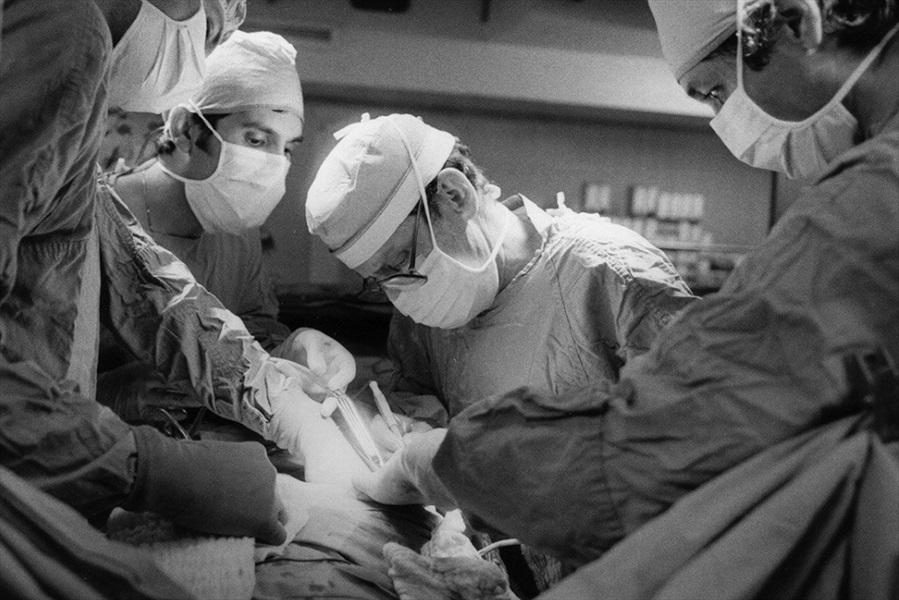Baboon-to-human liver transplantation
30 years ago the first baboon-to-human transplant, with my mentor T. E. Starzl. I would like to recall this historic article in the journal "The Lancet" of 9 January 1993
Our ability to control both the cellular and humoral components of xenograft rejection in laboratory experiments, together with an organ shortage that has placed limits on clinical transplantation services, prompted us to undertake a liver transplantation from a baboon to a 35-year-old man with B virus-associated chronic active hepatitis and human immunodeficiency virus infection.
Liver replacement was performed according to conventional surgical techniques. Immunosuppression was with the FK 506-prednisone-prostaglandin regimen used routinely for hepatic allotransplantation, to which a daily non-myelotoxic dose of cyclophosphamide was added. During 70 days of survival, there was little evidence of hepatic rejection by biochemical monitoring or histopathological examination. Products of hepatic synthesis, including clotting factors, became those of the baboon liver with no obvious adverse effects.
Death followed a cerebral and subarachnoid haemorrhage that was caused by an angioinvasive aspergillus infection. However, the underlying cause of death was widespread biliary sludge that formed in the biliary tree despite a seemingly satisfactory choledochojejunostomy. During life and in necropsy samples, there was evidence of the chimerism that we believe is integral to the acceptance of both xenografts and allografts. Our experience has shown the feasibility of controlling the rejection of the baboon liver xenograft in a human recipient. The biliary stasis that was the beginning of lethal infectious complications may be correctable by modifications of surgical technique. In further trials, the error of over-immunosuppression should be avoidable.
Introduction
Previous attempts to transplant seven baboon kidneys and two hearts resulted in graft loss or patient death between 0 and 60 days after transplantation. A common difficulty was uncontrolled cellular rejection, together with antibody-mediated occlusive endotheliolitis of graft microvasculature and parenchymal necrosis. Recent laboratory investigations have shown that the presumably humoral component of xenograft rejection could be diminished by a short course of antimetabolite therapy, such as cyclophosphamide, which targeted the B-cell proliferative response. By overcoming this antibody barrier, the value of maintenance therapy with T-celldirected immunosuppressants was unmasked.
We now describe a baboon-to-human liver xenotransplantation in which FK 506 and cyclophosphamide were given as immunosuppressants, together with prednisone and prostaglandin, both of which help to mitigate preformed antigraft antibody syndromes and cellular rejection.
[...]
 06.60301809
06.60301809






